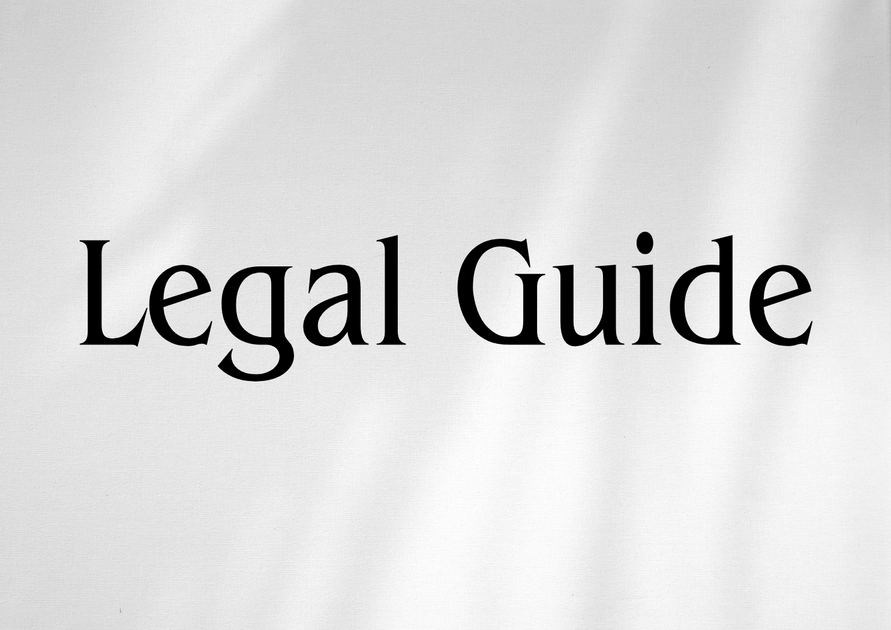Introduction: The Growing Need for Robust Sanctions Screening and AML Compliance in Qatar
As global financial regulations tighten and cross-border trade between Qatar and the United Arab Emirates (UAE) intensifies, sanctions screening and anti-money laundering (AML) compliance stand as cornerstone obligations for businesses operating in the region. Recent years have witnessed numerous updates to regional and international frameworks, with significant legal repercussions for companies that mismanage or overlook their compliance responsibilities. For UAE-based entities with Qatari connections, understanding the evolving landscape of Qatari sanctions and AML laws is essential to business continuity, risk minimization, and reputation protection. In this article, we provide an in-depth consultancy-grade analysis of Qatari AML and sanctions screening regulations, compare recent legislative updates, and offer actionable legal guidance tailored for UAE stakeholders. This is particularly relevant in 2025 as GCC-wide regulatory convergence increases scrutiny, cross-border financial flows surge, and enforcement risks heighten for companies engaged in the Qatari market.
By drawing on authoritative official sources such as the Qatar Financial Centre Regulatory Authority, the UAE Ministry of Justice, and the UAE Federal Legal Gazette, this advisory equips executives, compliance professionals, and legal practitioners with practical insights to remain compliant and responsive to change. Ultimately, our comprehensive examination empowers you to anticipate regulatory shifts, protect your organization, and confidently navigate the UAE–Qatar legal nexus.
Table of Contents
- Overview of Sanctions Screening and AML Laws in Qatar
- The Legal and Regulatory Framework: Key Laws and Authorities
- Recent Updates and Regulatory Developments
- Practical Application in the UAE–Qatar Context
- Risks and Penalties: The Impact of Non-Compliance
- Comparative Analysis: Old vs. New Frameworks
- Case Studies and Practical Examples
- Effective Compliance Strategies for UAE Businesses
- Conclusion: Shaping the Future of AML Compliance in the UAE–Qatar Corridor
Overview of Sanctions Screening and AML Laws in Qatar
Sanctions screening and anti-money laundering (AML) are essential pillars of the compliance regimes within the GCC, including Qatar. Sanctions screening refers to the process of identifying whether any party involved in a transaction is subject to international or domestic sanctions. This is integral to preventing transactions that could finance terrorism, breach trade restrictions, or support criminal enterprises. AML, on the other hand, encompasses the mechanisms put in place to detect, prevent, and report activities linked to illicit financial flows, thereby safeguarding integrity in the region’s financial systems.
The Relevance for UAE Businesses
For businesses in the UAE conducting operations in or with Qatar, understanding Qatari AML and sanctions laws is not merely prudent—it is a necessity. Failure to comply can result in severe legal, operational, and reputational consequences, with the added complexity of cross-jurisdictional cooperation between Qatari and UAE regulators. With enforcement increasingly aligned across the GCC, UAE-based legal entities must pay specific attention to Qatari obligations to avoid inadvertent violations.
Key Drivers Behind Enhanced Scrutiny
- Global pressure from FATF (Financial Action Task Force) and international monitoring frameworks
- Rising financial crime threats in the post-pandemic digital economy
- Regional regulatory harmonization in the wake of recent risk assessments
- UAE’s ongoing legal reforms in AML/CFT, including the recent Federal Decree-Law No. 20 of 2018 (as amended) and its alignment with Qatari standards
The Legal and Regulatory Framework: Key Laws and Authorities
Qatar: Main Legislative Instruments
- Law No. 20 of 2019 on Combating Money Laundering and Terrorism Financing (the “AML Law”) — Sets the foundational obligations for all financial institutions and designated non-financial businesses and professions (DNFBPs) in Qatar.
- Qatar Financial Markets Authority (QFMA) Rules on AML/CFT — Regulate reporting entities with responsibilities under the AML Law’s mandates.
- Qatar Central Bank (QCB) Circulars and Guidelines — Provide detailed expectations for banking and non-banking financial institutions.
- Cabinet Decision No. 41 of 2019 — Establishes the National Counter-Terrorism Committee and its coordination with domestic and international agencies.
Qatari Regulatory Bodies
- National Anti-Money Laundering and Terrorism Financing Committee (NAMLC) — Responsible for national policies, cross-agency cooperation, and representational duties with FATF and MENAFATF.
- Qatar Financial Centre Regulatory Authority (QFCRA) — Regulates financial sector participants within the Qatar Financial Centre.
UAE: Intersecting Legal Environment
Many UAE businesses are subject to both UAE and Qatari regulations owing to their operations, partnerships, or investments. Notable UAE regulations include:
- Federal Decree-Law No. 20 of 2018 on Anti-Money Laundering and Combating the Financing of Terrorism and Illegal Organizations — The UAE’s main AML/CFT statute, recently updated to further align with FATF recommendations.
- Cabinet Decision No. 74 of 2020 — Sets out the implementing regulations for the above law.
Recent Updates and Regulatory Developments
Aligning with International Standards
Qatar’s ambitious legal reforms since 2019 have brought its AML/CFT controls in closer alignment with FATF’s 40 Recommendations, as reflected in the enhanced Law No. 20 of 2019. This law expanded the range of obligated entities, defined stricter reporting standards, and bolstered the enforcement toolkit available to regulators. Notably, similar legislative updates occurred in the UAE with Federal Decree-Law No. 26 of 2021 amending the foundational AML/CFT law, tightening due diligence and reporting requirements in response to international scrutiny.
Key Features of Qatar’s 2019 AML Law
- Expanded coverage to DNFBPs (law firms, auditors, real estate agents, etc.)
- Mandated enhanced customer due diligence (CDD) and ongoing monitoring
- Prescriptive requirements for sanctions screening against all designated global and domestic lists
- Greater board and senior management accountability
- Increased penalties for failures in compliance, including significant administrative fines and possible criminal prosecution
New Regulatory Guidance in 2025
Recent Qatari regulatory pronouncements in early 2025 have emphasized the importance of real-time transaction monitoring, automated sanctions screening, and greater transparency in beneficial ownership identification. Joint initiatives with the UAE’s Ministry of Justice and Central Bank have led to the exchange of typologies and red-flag indicators, streamlining Gulf-wide enforcement practices. These updates are particularly relevant as Qatar prepares for its next Mutual Evaluation by MENAFATF, driving pre-emptive compliance tightening among regulated entities.
Practical Application in the UAE–Qatar Context
Business Scenarios: Cross-Border Obligations
UAE firms—whether banks, professional services, or real estate brokers—must evaluate how their Qatari operations or clients expose them to additional regulatory expectations. For example, a Dubai-based financial institution servicing Qatari clients must:
- Screen all transactions and parties against both the Qatari sanctions lists and those maintained by the UAE Cabinet, as well as those issued by the United Nations.
- Undertake rigorous customer due diligence, requiring documentation not only of the source of funds but also of beneficial ownership, in accordance with both jurisdictions’ laws.
- File suspicious transaction reports (STRs) with the relevant authority, whether the Qatar Financial Information Unit (QFIU) or the UAE’s Financial Intelligence Unit (FIU), depending on the principal nexus of the transaction.
Dual Regulatory Risks: What to Watch For
- Rules may differ in the definition of “politically exposed persons” (PEPs), due diligence triggers, or the scope of sanctions lists.
- Overlapping obligations can create inconsistent or duplicative reporting, highlighting the need for harmonized internal policies.
- Non-compliance in either jurisdiction risks regulatory censure, business disruption, or, in grave cases, criminal prosecution and asset forfeiture.
Risks and Penalties: The Impact of Non-Compliance
Enforcement Trends and Liability
Qatar has intensified enforcement since implementing its revised AML Law. Regulatory penalties are no longer limited to financial institutions but broadly cover DNFBPs and senior executives. Key risks include:
- Hefty administrative fines: For instance, failure to undertake adequate sanctions screening can attract fines up to QAR 5 million under Law No. 20 of 2019.
- Suspension or revocation of business licenses: Regulatory authorities may suspend the license of non-compliant entities, essentially freezing operations until remediation is complete.
- Criminal prosecution of individuals: Senior managers and compliance officers face the prospect of personal criminal liability if found willfully negligent or complicit.
- Public black-listing: Companies may be publicly named, jeopardizing banking relationships and counterparties’ confidence.
Proposed Visual: Penalty Comparison Table
| Provision | Qatar AML Law (Law No. 20/2019) | UAE AML Law (Fed. Decree-Law 20/2018, as amended) |
|---|---|---|
| Failure to File STRs | QAR 1–5M fine, possible imprisonment | AED 50,000–1M fine, up to 2 years imprisonment |
| Inadequate CDD | QAR 1M fine, possible license suspension | AED 100,000–500,000 fine |
| Failure in Sanctions Screening | QAR 5M fine, enhanced scrutiny | AED 500,000+, admin closure |
Proposed Visual: AML Compliance Process Flowchart
Suggestion for Visual Team: A flowchart illustrating the end-to-end AML process—from onboarding and CDD, through real-time sanctions screening, to suspicious activity reporting—highlighting cross-border coordination touchpoints.
Comparative Analysis: Old vs. New Frameworks
Evolution of Qatari and UAE AML/CTF Laws
| Aspect | Pre-2019 Qatari AML Law | Law No. 20 of 2019 | UAE AML Law Pre-2021 | Fed. Decree-Law 26 of 2021 (UAE) |
|---|---|---|---|---|
| Scope | Mainly financial institutions | Includes complete DNFBP coverage | Primary financial sector focus | Full DNFBP inclusion, tightening of CDD |
| Penalties | Mostly fines, lower criminal liability | Significant fines, personal liability | Admin fines, less focus on individuals | Enhanced administrative and personal sanctions |
| Sanctions Screening | General, less frequent updates | Mandatory, real-time screening, all domestic/international lists | Basic mandatory checks | Automated screening, periodic audits |
| Management Accountability | Within compliance function | Board-level responsibility codified | Senior compliance officers | Wider board and manager liability |
Case Studies and Practical Examples
Case Study 1: Dubai Real Estate Firm with Qatari Clients
A Dubai-based luxury real estate group regularly brokers sales to Qatari nationals. During a 2024 transaction, the group’s enhanced CDD detects that a Qatari client appears on a recently updated UN sanctions list—while Qatar’s domestic list has not yet reflected this change. Guided by UAE Cabinet Decision No. 74 of 2020, the Dubai firm places the transaction on hold, seeks local legal advice, and files a proactive notification to both the UAE FIU and the Qatari QFIU. This approach prevents exposure under both jurisdictions, demonstrating how vigilant cross-list screening protects against accidental regulatory breaches.
Case Study 2: Qatari DNFBP Branch in Abu Dhabi
A Qatari accounting partnership expands into the Abu Dhabi Global Market (ADGM), seeking to leverage cross-GCC expertise. Upon regulatory inspection, UAE authorities find that while the branch applies robust Qatari AML controls, it omits ADGM-specific suspicious activity thresholds and indirect beneficial owner identification rules required under Federal Decree-Law 20 of 2018 (as amended). The fallout includes a compliance remediation order and reputational embarrassment, underscoring the importance of customizing AML policies to match the most stringent applicable rules across all active jurisdictions.
Hypothetical Example: Sanctions Evasion Attempt via Offshore Structures
An international trading company based in Ras Al Khaimah acts as a facilitator for Qatari corporate clients engaged in high-risk sectors. By routing payments through third-country offshore entities, an executive attempts to bypass screening obligations. An updated automated AML system flags unusual transaction patterns, prompting an internal investigation and subsequent reporting. This scenario emphasizes the necessity for robust, layered AML controls and automated monitoring solutions that operate seamlessly across intra-GCC business structures.
Effective Compliance Strategies for UAE Businesses
1. Holistic Policy Reviews
Review and harmonize policies so that internal requirements equal or surpass the strictest standard of all applicable jurisdictions—Qatar and UAE included. This includes dual-list sanctions screening and tailored CDD checklists.
2. Automated and Real-Time Screening
Deploy advanced technological solutions for screening clients and transactions against the dynamic, ever-evolving landscape of international, UN, Qatari, and UAE sanctions lists. Automation facilitates real-time updates, minimizes manual error, and provides auditable logs for regulatory inspection.
3. Board-Level Engagement and Training
Elevate AML and sanctions compliance responsibilities to the level of the board and senior management, as mandated by both Qatari and UAE regulations. Regular, scheduled training for directors and managers—tailored to GCC legal developments—ensures ongoing vigilance and actionable preparedness.
4. Cross-Border Coordination
Establish dedicated compliance teams or assign liaisons who monitor regulatory updates in both Qatar and the UAE. Joint exercises and simulated audits can identify policy gaps and foster a culture of proactive compliance.
5. Documentation and Audit Readiness
Maintain robust documentation, covering every step of the due diligence, screening, escalation, and reporting process. Regular mock audits, involving both internal reviewers and outside legal consultants, verify that policies function as intended under regulatory scrutiny.
Proposed Visual: Compliance Checklist
| Step | Action |
|---|---|
| 1 | Obtain up-to-date sanctions lists (Qatari, UAE, UN). |
| 2 | Undertake holistic CDD and identify beneficial owners. |
| 3 | Screen all parties to transactions in real time. |
| 4 | Escalate and report suspected violations or matches. |
| 5 | Retain all documentation for minimum regulatory periods. |
Conclusion: Shaping the Future of AML Compliance in the UAE–Qatar Corridor
Sanctions screening and AML compliance obligations in Qatar—and by extension in the broader GCC—are evolving with unprecedented speed and complexity. For UAE businesses, the legal imperative is clear: adopt a proactive, harmonized approach that anticipates regulatory convergence, leverages automation, and embeds compliance at the core of business strategy. With deeper cross-border cooperation between UAE and Qatari authorities, the risks of non-compliance are sharply increasing, but so too are the opportunities for leaders who treat regulatory excellence as a competitive advantage.
As the region’s legal frameworks continue to evolve in response to international standards and new financial crime typologies, UAE-based organizations would be well advised to:
- Stay attuned to official updates from both the UAE and Qatari regulators
- Invest in staff training, automated monitoring, and legal advisory support
- Benchmark policies against the strictest applicable requirements—whether domestic or Qatari
By taking these steps, businesses can not only minimize risk and avoid penalties but also position themselves as trusted partners in the rapidly integrating Gulf economy. For clients, trusted legal consultancy is an indispensable asset in navigating these challenges and unlocking sustainable growth.




